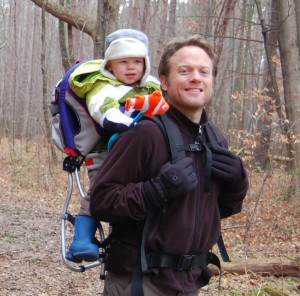 As anyone with a young baby knows, getting enough sleep is the holy grail for new parents. When the baby monitor sounds with the cry of our youngest in the middle of the night, I immediately look at the clock to calculate how long I’ve been asleep. Anything longer than four hours is a victory!
As anyone with a young baby knows, getting enough sleep is the holy grail for new parents. When the baby monitor sounds with the cry of our youngest in the middle of the night, I immediately look at the clock to calculate how long I’ve been asleep. Anything longer than four hours is a victory!
Of course, there is advice galore about the best way to get your baby to sleep through the night. Everyone from family members to strangers in the grocery store offer suggestions about getting a restful night. One older family friend explained to me that she used to tie a teething biscuit onto the crib rails when her children were young, so they would have something to eat when they woke! Dozens of books supply a wide range of theories: let your baby cry it out, feed your baby on a regular schedule, or just put the baby in bed with you.
While all of this sounds great, I figured my best chance on getting a good night’s sleep was to consult the evidence. Sure enough, a review of both randomized, controlled studies and observational studies by England’s National Childbirth Trust draws some definite conclusions about the best methods to encourage a newborn to sleep at night.
Among them:
- Holding,rocking or feeding the babies to sleep leads them to depend on that action to fall asleep.
- Putting babies in their cribs while awake they’re still awake, establishing a bedtime routine and leaving them with a favorite toy or blanket leads babies to fall asleep on their own sleep for longer stretches at night.
- There is some evidence that introducing another feeding between 10p.m. and midnight can help the baby sleep for longer stretches at night without waking.
We’ve always put our babies in their cribs while they’re still awake. I have found that doing this teaches them how to sooth themselves, and ultimately fall back asleep on their own when they wake during the night.
So far, it seems to be working for us. Last night, Hannah went to be at 8:30 p.m. and didn’t wake up until 4 a.m. – a pretty solid stretch for a 10-week-old. Hopefully that means I’m we’re on the way to being a well-rested family again!





